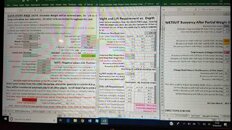I used your tool and here is my practical result. My issue was that I am a Florida diver that uses a stretchy 3 mil suit. I was going to dive in California and use a much less stretchy 7 mil semi-dry with hood, gloves, boots, etc. I currently carry 12 pounds but that is intentional overweighting to hold bottom in our currents for my photography, so I had no real starting point for an estimate. I needed to dial in my weight before California because my first dives were boat dives and I had to have it right. I also knew i would not need to overweight because the conditions in California did not involve currents.
After using the calculator and estimating the weight of my equipment, the estimated weighting was 20 pounds. I then went to an easy shore dive spot with the tank I used for calculation (steel hp 100) geared fully up (looked ridiculous in 82 degree water), carried 25 pounds in my thigh pockets just in case the calculator was light, dove to 16 feet, drained the tank to 500 psi, and then began shedding weight. I was an anchor at 25 pounds. I was still heavy at 20 pounds. Ultimately, I was nice and neutral with 15 pounds. I think my regulator (a double hose) and some of my other gear combined weighs several pounds more than the default weights in the calculator.
But, in summary, the calculator was great and pretty right on. It was a perfect starting point when otherwise I would have had no idea. If I had actually weighed my gear (reg, light, reel, etc) then I bet it would have been even closer to the 15 pounds.
I also figure that I could easily drop from 12 pounds to 6 pounds for my Florida diving unless I want to intentionally overweight.





